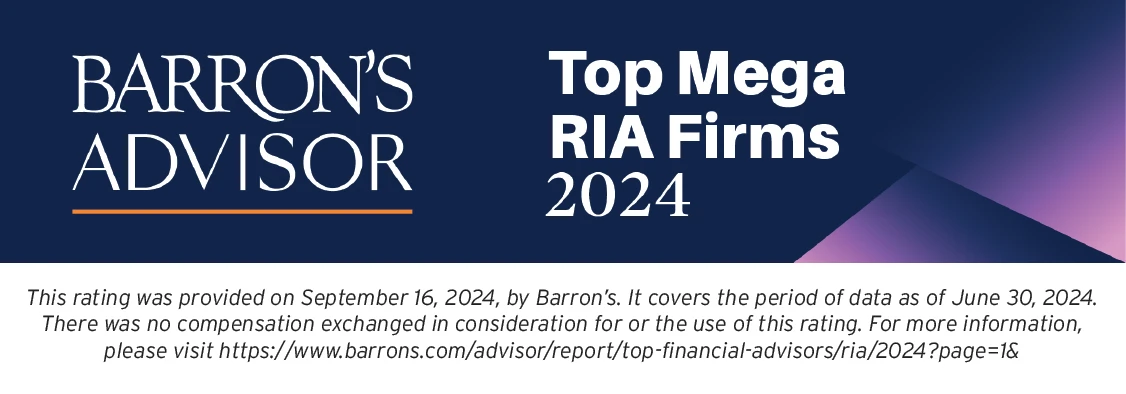Breaking the 4% Rule
By Andrea Young on September 28, 2022

by Kerry Luria
In October 1994, William P. Bengen published an article for the Journal of Financial Planning entitled, “Determining Withdrawal Rates Using Historical Data.” He wrote, “Assuming a minimum requirement of 30 years of portfolio longevity, a first-year withdrawal of 4 percent, followed by inflation-adjusted withdrawals in subsequent years, should be safe.”
The interpretation: As long as I don’t withdraw more than 4% of my portfolio I won’t run out of money. This concept, hooked with the word “safe,” was quickly adopted as a rule of thumb for those entering retirement. While the simplicity is enticing, managing one’s wealth is far more complicated and there is no one-size-fits-all solution.
Market Expectations
Before you begin to distribute your portfolio, it is important to consider today’s capital market assumptions. Where are we in the market cycle and what should we expect from our investments? The numbers vary, but even with the recent market corrections, most forward looking expectations are calling for lower than average returns in the coming years. For example, forecasts for US equities are in the 6-7% range – a significant reduction from the 8-9% often cited for stocks’ average return. The long-term average of 4.8% for US bonds is also trimmed; now hovering just below 4%. There could be some opportunity for investors willing to allocate funds to international stocks. Expected returns from overseas markets are forecast in the 9-10% range, a considerable bump from historical returns of 6-7%.
Running projections based on historical data does not reflect today’s investment landscape and may lead to a false sense of security. Additionally, investors on the cusp of retirement often desire to scale back their allocation to “risk” assets, but that may not be fully possible in today’s environment.
Place Your Bets
Financial planning tools often project future portfolio returns with straight-line return assumptions. Long-term historical average returns are mapped to various asset classes which are then used to predict expected annual portfolio performance. Year over year the investments churn out the same performance. Markets do not follow a straight line. Historical, average market returns may allow a portfolio to fully fund future distributions, and over the lifetime of the portfolio, the annualized return may in fact fall in line with the average. If, however, negative returns occur early in the distribution cycle, one’s lifetime income – and lifestyle – could be at risk. One method used to “test” a portfolio and gain confidence in its longevity is to run a Monte Carlo simulation. Computer calculations model the probability of different outcomes by randomizing the historical performance of markets. The frequencies of different outcomes from running thousands of trials will form a normal distribution and an “expected” outcome. While not guaranteed, it offers a glimpse of the most probable, and worst-case, scenarios.
Picking the Right Allocation
Retirees often flip the switch at retirement and become too conservative too soon and take on the risk of running out of money. The impulse is to preserve what you have because you can’t go back to work, or more likely, you don’t want to. Most retirees should continue to think of themselves as long-term investors. Using mortality data from the Social Security Administration, J.P. Morgan estimates there is a 44% chance that within a 65 year old couple, one spouse will live to age 90 or beyond. Advances in health care and changes in diet and exercise allow us to continue to extend our life expectancy. A longer life means a longer time horizon – and likely more risk – for a retiree’s portfolio.
What about Buckets?
The idea of liability-based investing or “bucketing” your assets is compelling. The thought is you identify what your income needs are for the next 1-2 years and set that aside in cash. The next bucket is filled with lower risk assets like bonds to cover your needs for the next 3-5 years. The final bucket is for everything else and is typically allocated to stocks. As time goes on you move funds from bucket to bucket to make sure you always have enough cash. There are two main problems with this. One, your cash and bond “buckets” could perhaps do more than just generate distributions and you could be missing out on significant investment opportunities. Two, as you move money from stocks to bonds to cash you may be selling/buying at the wrong time in the market cycle just to keep your buckets full.
The Better Strategy: Rebalancing
A more thoughtful, disciplined strategy to manage your portfolio for distributions is rebalancing. Your portfolio should be constructed so that the expected risk and return is in-line with your long-term needs and objectives. You presumably have a diversified portfolio with target allocations for each asset class. When you rebalance, you sell assets that are above their target allocations and buy assets that are below their targets. This ensures that assets are not sold when they are down, (just because they are in a specific bucket), but are in fact purchased to benefit from a likely future rebound.
Conclusion: Be Flexible & Plan Ahead
Recognize that you can’t control the markets but you can control your spending. Small changes in withdrawal rates can have a huge impact on whether or not your portfolio will last your lifetime. If you can, be flexible with the amount you distribute. Take less in years when performance disappoints and more when it exceeds expectations.
Portfolio distribution is not as simple as following a 4% rule. Preparing for the next 20/30/40 years of your portfolio’s life starts long before your distribution date. Plan with your Advisor to work through reasonable assumptions, build realistic expectations and design and implement an investment strategy that ensures you can maintain your lifestyle.
Disclosure
Lexington Wealth Management is a group comprised of investment professionals registered with Hightower Advisors, LLC, an SEC registered investment adviser. Some investment professionals may also be registered with Hightower Securities, LLC, member FINRA and SIPC. Advisory services are offered through Hightower Advisors, LLC. Securities are offered through Hightower Securities, LLC. This is not an offer to buy or sell securities. No investment process is free of risk, and there is no guarantee that the investment process or the investment opportunities referenced herein will be profitable. Past performance is neither indicative nor a guarantee of future results. The investment opportunities referenced herein may not be suitable for all investors. All data or other information referenced herein is from sources believed to be reliable. Any opinions, news, research, analyses, prices, or other data or information contained in this presentation is provided as general market commentary and does not constitute investment advice. Lexington Wealth Management and Hightower Advisors, LLC or any of its affiliates make no representations or warranties express or implied as to the accuracy or completeness of the information or for statements or errors or omissions, or results obtained from the use of this information. Lexington Wealth Management and Hightower Advisors, LLC assume no liability for any action made or taken in reliance on or relating in any way to this information. The information is provided as of the date referenced in the document. Such data and other information are subject to change without notice. This document was created for informational purposes only; the opinions expressed herein are solely those of the author(s) and do not represent those of Hightower Advisors, LLC, or any of its affiliates.
FYI Categories
Events Series
Lexington Wealth Management is a group comprised of investment professionals registered with Hightower Advisors, LLC, an SEC registered investment adviser. Some investment professionals may also be registered with Hightower Securities, LLC (member FINRA and SIPC). Advisory services are offered through Hightower Advisors, LLC. Securities are offered through Hightower Securities, LLC.
This is not an offer to buy or sell securities, nor should anything contained herein be construed as a recommendation or advice of any kind. Consult with an appropriately credentialed professional before making any financial, investment, tax or legal decision. No investment process is free of risk, and there is no guarantee that any investment process or investment opportunities will be profitable or suitable for all investors. Past performance is neither indicative nor a guarantee of future results. You cannot invest directly in an index.
These materials were created for informational purposes only; the opinions and positions stated are those of the author(s) and are not necessarily the official opinion or position of Hightower Advisors, LLC or its affiliates (“Hightower”). Any examples used are for illustrative purposes only and based on generic assumptions. All data or other information referenced is from sources believed to be reliable but not independently verified. Information provided is as of the date referenced and is subject to change without notice. Hightower assumes no liability for any action made or taken in reliance on or relating in any way to this information. Hightower makes no representations or warranties, express or implied, as to the accuracy or completeness of the information, for statements or errors or omissions, or results obtained from the use of this information. References to any person, organization, or the inclusion of external hyperlinks does not constitute endorsement (or guarantee of accuracy or safety) by Hightower of any such person, organization or linked website or the information, products or services contained therein.
Click here for definitions of and disclosures specific to commonly used terms.

Sign up for LWM Communication
Office
12 Waltham St
Lexington, MA 02421
Phone: (781) 860-7745
Fax: (781) 207-0253

Securities offered through Hightower Securities, LLC, Member FINRA/SIPC, Hightower Advisors, LLC is a SEC registered investment adviser. brokercheck.finra.org ©2025 Hightower Advisors. All Rights Reserved.
Legal & Privacy | Web Accessibility Policy | Our ADV
Form Client Relationship Summary ("Form CRS") is a brief summary of the brokerage and advisor services we offer.
HTA Client Relationship Summary
HTS Client Relationship Summary